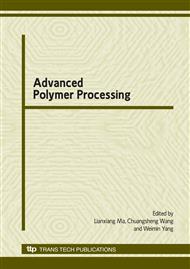p.167
p.172
p.177
p.183
p.188
p.194
p.200
p.206
p.211
Comparison of Human Articular Cartilage and Polyvinyl Alcohol Hydrogel as Artificial Cartilage in Microstructure Analysis and Unconfined Compression
Abstract:
Many biomaterials have been developed to replace articular cartilage. One of these materials, polyvinyl alcohol (PVA) hydrogel is proposed to be used as artificial cartilage in joint replacement. To better understand the differences between human articular cartilage and PVA hydrogel, microstructure analysis and unconfined compression were developed. In microstructure analysis, the surface of articular cartilage was smooth and free from any significant morphological features. Some small holes were found in the surface and cross-section of PVA hydrogel. The porous structure of PVA hydrogel was observed clearly by Environmental scanning electron microscopy (ESEM). In unconfined compression tests, the compression modulus of articular cartilage was higher than that of PVA hydrogel. In the creep tests, the strain value of articular cartilage was lower than that of PVA hydrogel all the time. It is indicated that the microstructure of each material has a great influence on their biphasic property which related to their mechanical behavior.
Info:
Periodical:
Pages:
188-193
Citation:
Online since:
December 2009
Authors:
Keywords:
Price:
Сopyright:
© 2010 Trans Tech Publications Ltd. All Rights Reserved
Share:
Citation:


